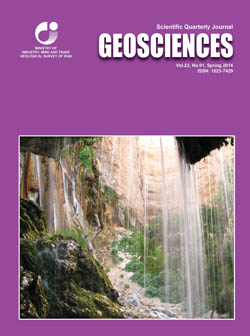Document Type : Original Research Paper
Authors
1 M.Sc., Research Institute for Earth Sciences, Geological Survey of Iran, Tehran, Iran; Geo-Math Group, Applied Geological Research Center of Karaj, Karaj, Iran
2 Ph.D., Seismotectonic Group, Geological Survey of Iran, Tehran, Iran
3 Associate Professor, Research Institute for Earth Sciences, Geological Survey of Iran, Tehran, Iran
4 M.Sc., Geological Survey of Iran, Tehran, Iran
Abstract
The analytical models in rock mechanics represent suitable analysis of deformation and failure conditions of the samples bearing simple geometry and mechanical properties. Nowadays different methods of numerical modeling, like finite difference method (FDM), are used for analysis of continuous, non- and quasi- continuous behavior. This paper represents logical estimate of geomechanical properties of the Asmari formation with usage of the results of triaxial tests on intact rock samples of the upper limy part of this formation and also the finite difference methods. For this purpose, we designed some models containing simple boundary condition and only one rheological unit. To simulate the failure conditions of the samples, a geomechanical simulative software (Flac 2D) was used. The failure of samples under the experienced stress conditions in laboratory were of basic data for simulation of failure conditions by finite difference method. The results show that the cohesion coefficient and uniaxial tensile strength are of sensitive parameters in controlling the failure conditions. This study suggests that the values of Young's and Bulk modulus are 260GPa, 23GPa, respectively, when the uniaxial tensile strength and cohesion coefficient are considered 29MPa and 26MPa, respectively.
Keywords

